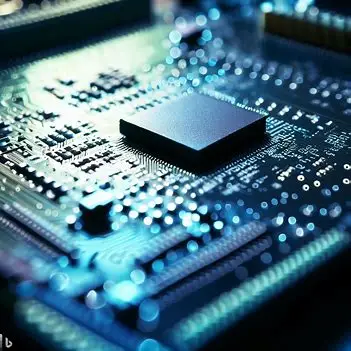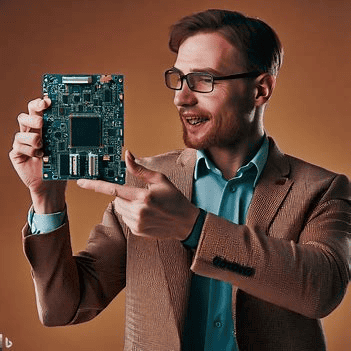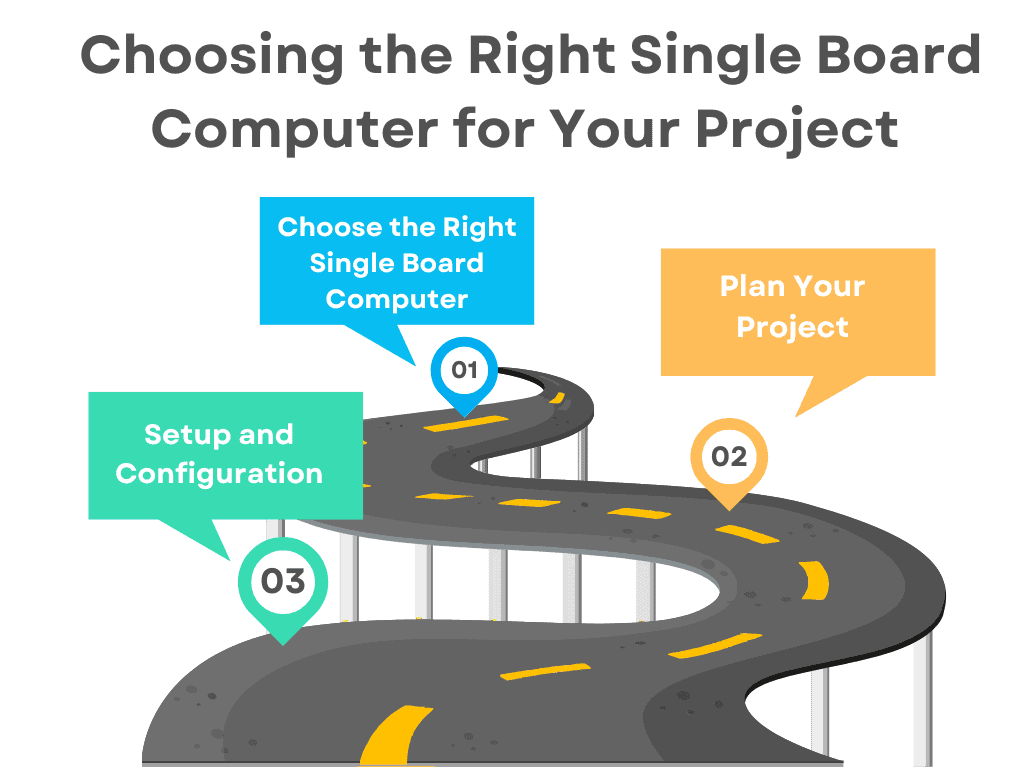Table of Contents
Key Takeaways
- Single board computers (SBCs) are versatile and affordable devices that can be used for a wide range of projects.
- SBCs like the Raspberry Pi and Arduino are popular choices for DIY enthusiasts and hobbyists due to their small size and low cost.
- SBCs can be used for various projects such as home automation, robotics, media centers, and even as a retro gaming console.
- SBCs offer a great platform for learning and experimenting with programming, electronics, and hardware integration.
- SBCs can be easily connected to sensors, motors, and other components, making them ideal for building interactive and IoT projects.
- SBCs often have a strong online community and support, with plenty of resources and tutorials available to help beginners get started.
- SBC projects can be a fun and educational way to develop new skills, solve problems, and bring ideas to life.
- SBCs are constantly evolving, with new models and features being released regularly, providing even more possibilities for creative projects.

Single Board Computers (SBCs) – these mini powerhouses pack a whole lot of functions in a small form factor. Perfect for any project, from hobbyists to professionals. With integrated components like processors, memory and storage, SBCs provide a complete computing system on one board. They’re cost-effective and space-saving, too!
Plus, they offer endless possibilities with their ability to interface with different peripherals and sensors. From cameras to Wi-Fi modules, SBCs can connect to external devices, widening the scope of projects. Plus, compatibility with various operating systems gives users the freedom to pick the best software for them.
As technology advances, don’t miss out on the chances SBCs offer. Home automation, robotics and IoT development are just some of the exciting domains these boards open up. So, don’t be afraid to explore this captivating field – seize the chance to create something extraordinary with Single Board Computers!
How Single Board Computers are Used in Projects
Single board computers are popular in projects due to their versatility and small size. These powerful, yet tiny devices have become a must-have in numerous applications across industries. Let’s learn the common uses for them.
| Use Cases | Description |
|---|---|
| Robotics | They provide computing power to control and manage robotic systems. They can handle complex algorithms and aid robots to do tasks autonomously. |
| IoT | They are key to IoT projects by enabling connection and communication between gadgets. They act as the main hub to collect, process, and transmit data, letting users control connected devices remotely. |
| Home Automation | Integrate them with sensors, actuators, and other devices to access lighting, temperature, security systems, and appliances through one interface. |
| Education | Use them in education settings to improve learning experiences. They give students the chance to program and understand concepts related to coding, electronics, and computer science. |
In addition to these, single board computers are also utilized in media centers, digital signage systems, industrial automation, and more.
Now, a piece of history about them. During WWII, the British used single board computers for military objectives. The Colossus computer is one of the first single board computers. British codebreakers at Bletchley Park used it to decode German messages during the war. This device was the starting point of computing technology.
All in all, single board computers have changed the way we tackle projects. They are a vital tool in various fields, allowing innovation and helping people bring their ideas to life. Take your time choosing the right single board computer for your project – you don’t need to be in a rush!
Choosing the Right Single Board Computer for Your Project

Picking the right single board computer for your project needs special thought. Factors such as processing power, memory, connections, and size matter in deciding which board best fits your needs. Let’s get into the details!
Let’s simplify the important components to think about when selecting a single board computer. Have a look at the table below for a summary of the specs of some popular boards available:
| Board Model | Processor | Memory (RAM) | Connectivity | Price |
|---|---|---|---|---|
| Raspberry Pi 4 | Quad-core ARM Cortex-A72 64-bit CPU | 8GB LPDDR4-3200 SDRAM | Dual-band Wi-Fi, Bluetooth | $75 |
| Beagle Bone Black | Sitara AM335x Arm® Cortex®-A8 | 512MB DDR3L RAM | Gigabit Ethernet | $60 |
| Arduino Uno | ATmega328P Microcontroller | 2KB SRAM | USB | $20 |
Now, let us look at a few details you may not have considered. Besides hardware specs, you must pick a board that aligns with your project targets and objectives. Do you want power or simplicity? Do you require plenty of GPIO pins for sensor integration or multimedia support for audio and video applications? Answering these questions will help you pick the right board.
Don’t forget to explore the community surrounding each single board computer. Building projects becomes easier when you have access to a network of enthusiasts who can offer advice and share their experiences. Joining online forums or attending local meetups can open up many possibilities.
Ready to start your single board computer project? Get ready for a wild journey through the world of tech and the testing of debugging.
Choosing the Right Single Board Computer for Your Project

Beginning a single board computer project can be thrilling and gratifying. Whether you’re a novice or an experienced tech lover, this step-by-step guide will aid you in starting your project with ease.
Choose the Right Single Board Computer:
- Pick the right SBC based on your project demands, such as processing strength, connectivity choices, and form factor.
- Research diverse SBC options in the market and consider elements like compatibility with operating systems and community support.
Plan Your Project:
- Clearly state the goals and range of your project.
- Divide your project into smaller tasks or milestones to guarantee efficient execution.
- Construct a timeline or timetable to monitor deadlines and progression.
Setup and Configuration:
- Collect all essential components, like the chosen SBC, peripherals, cables, and power supply.
- Install the desired OS on the SBC following the manufacturer’s instructions.
- Configure network settings, access controls, and any other required software settings.
Know the Basics:
It is wise to have basic knowledge of electronics and programming to mend any issues that may arise during the development process. Additionally, using online resources such as forums and documentation can offer valuable understandings for solving technical problems.
Tips for Success:
- Start Small: Begin with easier projects before taking on more intricate ones to build up your expertise and trust gradually.
- Join Communities: Interact with online communities dedicated to single board computers where you can swap stories, look for advice, and collaborate with fellow fanatics.
- Experimentation is Key: Don’t be scared to try out different hardware add-ons or software settings to increase functionality or explore new possibilities.
By following these tips, you can open the full potential of your single board computer projects and lay the groundwork for imaginative and creative efforts. So, take in the fervor and dive into the world of single board computers with trust! Want to dodge a single board computer project disaster? Just recall to always put the blame on the hardware, never your lack of coding skills.
Tips and Tricks for Successful Single Board Computer Projects
Make the most of SBC projects with these key tips! Follow these guidelines to ensure success:
- Choose the right board
- Understand the documentation
- Optimize power consumption
- Utilize proper cooling
- Secure your project
Additionally, incorporate modular designs that can be upgraded over time. Check out SBC forums and resources tailored to your chosen model. This can provide extra insights and help you troubleshoot issues.
It’s time to explore the possibilities of single board computers – start your project now!
Real-world Examples of Impressive Single Board Computer Projects
Single board computer projects have taken the real world by storm, showcasing their immense potential. From small to large applications, these projects display the power of single board computers.
Examples of impressive single board computer projects:
- Project A: A weather monitoring system built using a single board computer. It provides accurate and real-time updates.
- Project B: An autonomous robot using computer vision and machine learning for object detection and navigation.
- Project C: A home automation system controlling lights, appliances, and security cameras from one interface.
- Project D: A portable media center streaming high-definition videos, movies, and music from online platforms.
- Project E: A smart farming solution monitoring soil moisture, temperature, and humidity.
These projects highlight the use of single board computers in various industries, such as weather monitoring, robotics, home automation, entertainment systems, and agriculture. They show the ability to access technology for improved efficiency and convenience.
Pro Tip: Research hardware compatibility before starting your own single board computer project. That way you can ensure seamless integration and optimal performance. The future of single board computer projects is bright, with plenty of possibilities.
Frequently Asked Questions
Q: What is a single board computer (SBC)?
A: A single board computer, or SBC, is a complete computer system built on a single circuit board. It includes a microprocessor, memory, input/output interfaces, and other essential components required for basic computer functionality. SBCs are compact and designed for embedded applications or DIY projects.
Q: What kind of projects can be done with single board computers?
A: Single board computers are incredibly versatile, allowing enthusiasts to undertake various projects. Some common SBC projects include home automation, robotics, media centers, IoT devices, retro gaming consoles, and even small-scale servers. The possibilities are only limited by your imagination and technical skills!
Q: Which single board computer is best for beginners?
A: For beginners, Raspberry Pi is often recommended as the best single board computer to start with. It’s user-friendly, widely supported with extensive documentation and a strong online community. Raspberry Pi boards come in different models, offering various capabilities at affordable prices.
Q: What programming languages are commonly used for single board computer projects?
A: Many programming languages can be used for SBC projects, but some popular choices include Python, C/C++, and JavaScript. Python is especially favored for its simplicity and readability, making it an excellent choice for beginners. However, the choice of programming language ultimately depends on the specific requirements of the project.
Q: Can I run a desktop operating system on a single board computer?
A: Yes, it is possible to run desktop operating systems on certain SBCs. The Raspberry Pi, for instance, can run a variant of Linux called Raspberry Pi OS (previously known as Raspbian). This allows you to have a full graphical interface and perform tasks similar to a traditional desktop computer.
Q: How do I power a single board computer?
A: Most single board computers can be powered through a Micro-USB or USB-C port using a compatible power adapter. The voltage and current requirements vary among different SBC models, so it’s important to check the manufacturer’s guidelines to ensure you use the correct power supply.
Tech is advancing fast. Single board computer projects are right at the front of this revolution! These have immense potential for future apps and possibilities. Let’s explore what they can do:
- Versatility: These boards offer a wide range of capabilities, making them useful for various applications. From IoT devices to robotics, they can revolutionize industries and life!
- Connectivity: With communication tech, these computers can connect easily with other devices. This opens up possibilities for creating interconnected systems that boost efficiency and convenience.
- Miniaturization: As tech progresses, these computers are getting smaller and more powerful. This miniaturization allows for computing power in even smaller devices, paving the way for wearable tech and compact gadgets.
- Accessibility: Projects with single board computers are becoming increasingly accessible to people with different tech skills. Platforms and resources make it easier to use these technologies, giving people the ability to be creative and innovative.
Plus, these projects can do more than this. Their potential applications go beyond what we can imagine today.
The concept of single board computer projects has been around for decades. The Altair 8800 microcomputer in 1975 by Micro Instrumentation Telemetry Systems (MITS) was the first instance. This affordable computing power gave individuals access to tech.
Today, single board computer projects continue to change the digital landscape. They offer endless opportunities for innovation. As we move towards a more connected world, these projects hold immense promise in transforming industries and enriching our lives.
References:
Single Board Computer Projects
Single Board Computer Projects
Also Read: